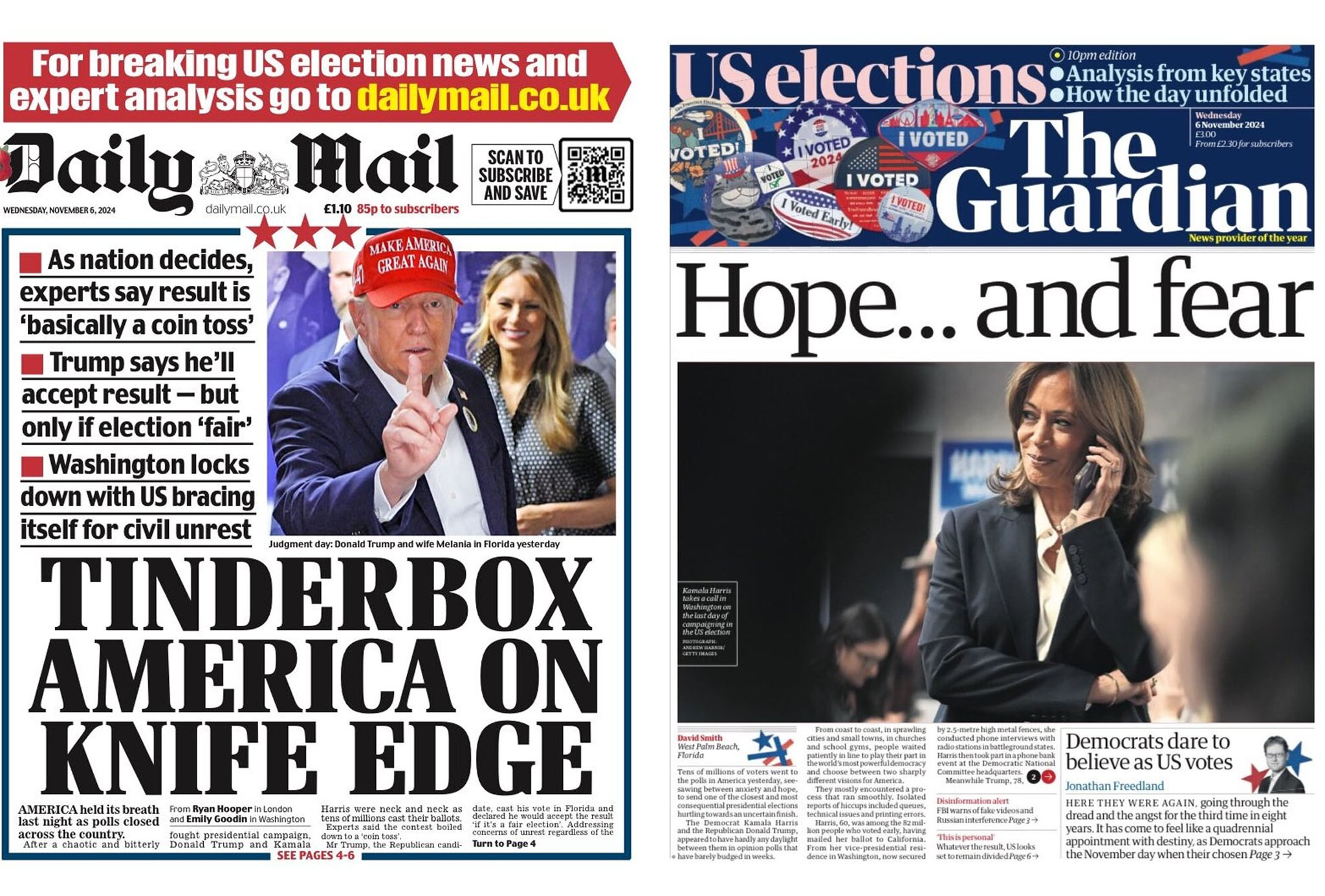Political Parties: Labour, Conservative, Liberal, Green, Reform . . . which one would you vote for?
Does a newspaper simply ‘mirrors’ the world or change the way we understand, interpret and evaluate the world?
Can images and news be translated into ‘political ideas’?
Does a newspaper define what party you vote for?
ACTIVITY 1: As an extension task take this UK political party test: https://voteforpolicies.org.uk/?utm_source=brevo&utm_campaign=Election+2024+-+survey+is+live&utm_medium=email and see which political party you are most aligned to.
Most political parties are characterised as either ‘left‘ or ‘right‘ leaning. Although in reality most political parties cannot be so extreme, so they have a mix of policies and are therefore aiming for the ‘centre ground‘.
A Liberal Free Press (James Curran) should (in theory) reflect a range of political ideas and opinions, which helps individual citizens to transform the public sphere (Habermas) through rational, logical, informed information and debate (this is essentially the democratic system.
But . . . do they?

Link to Newspapers
All the above is a very general map of ideological orientations. The variety and the complexity of these ideas is reflected in media organizations and printed press. Newspapers do not merely support parties: they present a spectrum of debates and various ‘shades’ of ideologies. Opinion columnists (who work for the same newspaper) might express radically opposing views on a number of issues. Parties are in themselves internally divided by conflicting fractions.
A significant part of media theory and history is concerned with the relationship between ideological pluralism and newspapers. For example, James Curran and Jean Seaton in Power without Responsibility explored how why ‘radical’ leftwing press – which was ‘independent both of government and the opposition in Parliament’ — ceased at some point, to exist.
One of the many questions today, is not only where a newspaper is situated in the ideological map but if large ‘territories’ (or else combinations) of ideas are completely vanished from newspaper coverage — and if so why?

